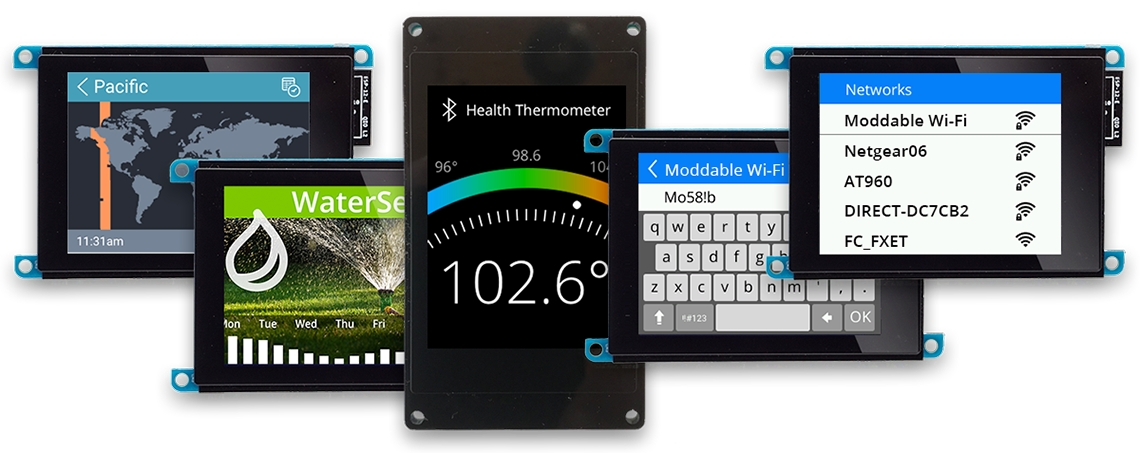Benefits of Displays

A display allows your product to deliver a truly limitless user experience, free from the constraints of traditional physical buttons, dials, and lights. The unparalleled flexibility of an on-screen interface allows you to include many more capabilities in your product. This empowers you to maximize the potential of the underlying hardware. Unlike a traditional physical interface, an on-screen interface can continue to improve even after your product leaves the factory.
Customers value products that they can understand. The goal is to deliver IoT products with a simple user experience that gives your customers access to unexpectedly powerful capabilities. A display is essential to achieving this goal.
Here are just three of the ways that a display simplifies the user experience:
- Displays enable your products to operate standalone, eliminating the need to pair with a computer, phone, or tablet. This ability to interact directly with an IoT product directly eliminates many common sources of complexity and confusion.
- Just by glancing at the display, the user is immediately aware of the product’s status and any alerts that require their attention. From network connectivity issues to hardware maintenance issues, a display is a clear and efficient way for an IoT product to deliver critical information to the user.
- Staying up-to-date with the latest software ensures that customers have the latest product features and optimizations along with essential security updates. A display alerts the customer when updates are available and makes it easy for them to apply updates promptly.


A display can also expand the market reach of your IoT product. A single product SKU can include support for a dozen languages or more, allowing it to be used by customers around the world. Having a single SKU streamlines development, reduces costs, and simplifies logistics.
Users like to customize their products – adjusting how they look and behave to match their personal preferences. Displays empower your customers to personalize their user experience by customizing colors, themes, backgrounds, and more. You can even empower your users to install third-party software that delivers new features, customizes existing behaviors, and connects to different cloud providers, giving them unparalleled control over their IoT experience.
Consider displays as an alternative to traditional interfaces. While physical buttons and lights have their place, displays offer a direct and efficient way for customers to interact with your products without the need for additional components.
Eliminating external interfaces, streamlines your user experience, providing a hassle-free interaction that caters to the preferences of your customers.
Embrace the power of displays and unlock a world of possibilities for your IoT products. Elevate your brand, simplify the user experience, expand your market reach, and deliver a highly customizable interaction that captivates your customers.